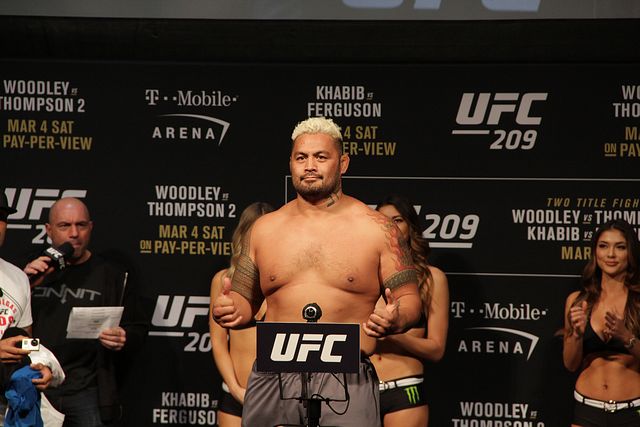
The CSAC and Association of Boxing Commissions have adopted new weight classes, but will any major promotion actually use them?
“Nope.”
That was UFC President Dana White’s answer when asked at the UFC 214 post-fight press conference last weekend as to whether the mixed martial arts behemoth could be adding more weight class. The California State Athletic Commission had introduced several new weight classes in May. Divisions featuring 165, 175, 195 and 225 pounds were introduced, though promotions are under no obligation to use them. Then, just days prior to UFC 214, the Association of Boxing Commissions voted unanimously to include the four new weight classes under the Unified Rules of MMA.
Again, despite the weight classes being included in the Unified Rules (which are yet to be adopted by all commissions), promotions are under no obligation to actually use the new divisions. It’s more of an “earmarked for future use” situation, or “if you need them, you’ve got them.”
The question is, does the UFC (and Bellator and other major MMA promotions) need them? And in the case of the UFC, who has the ultimate say?
Yesterday, MMA Junkie quoted a statement sent to them by UFC Vice President of Athlete Health and Performance, Jeff Novitzky, supporting the 10-point plan the CSAC launched earlier in the year, which includes the new weight classes. “UFC supports the offering of additional weight classes as initially outlined in CSAC’s ’10-point plan’ and now adopted by the ABC” Novitzky is quoted as saying. He then went on to highlight the promotion’s addition of women’s featherweight and flyweight as steps in the same direction.
What happened to “nope?” And just to add to the confusion, the very same MMA Junkie piece quotes UFC Chief Legal Consel Hunter Campbell as wanting to eliminate “consumer confusion by diluting the talent pool with additional weight divisions.”
Who’s steering this ship anyway?
When it comes to whether new divisions are needed, it’s hard to outright say no. While the UFC is not about to introduce new weight classes overnight, the fact that the divisions are established under the Unified Rules is certainly a plus for a time when they may wish to add them. The problem is, as Hunter Campbell alludes to, diluting the talent pool — and whether these are the right weight classes.
Consider that the deepest divisions in the UFC, thus the ones that would be least impacted by being split, are lightweight and welterweight. Up to lightweight (155lbs) you have a 10lb divide between weight classes (flyweight through lightweight). You then jump fifteen pounds to welterweight, at 170lbs. The new weight classes include 165 and 175lbs. 165lbs makes sense if you’re going to set weight classes at every 10lbs, which seems reasonable, but you then hit something of a snag with the welterweight division being at 170lbs. Do you really need three weight classes from 165 to 175lbs? Quite frankly, no.
The obvious solution here is to shift welterweight to 175lbs, rather than add a weight class. Then have weight classes every 10lbs between flyweight (125lbs) and light heavyweight (205lbs). In total, that brings about just two new weight classes, 165 and 195.
Seem reasonable?
You hit another snag with the 225lb weight class idea however. Right now, that’s essentially the floor for heavyweight, which runs up to 265lbs. Heavyweight is the only weight class where fighters weigh in at a range, rather than a specific weight. Heavyweight is also historically one of the shallowest divisions — while we love watching big guys fight, finding skilled big men is never easy. Splitting that weight class provides a definite dilution problem, and seems like it would result in a division where Mark Hunt fights Derrick Lewis every other bout. While most of the smaller, more agile fighters are down at cruiserweight.
You get what the commission is doing here, because a 40lbs weight discrepancy come fight night is a lot, but historically, the division has worked just fine. It’s not as if smaller fighters (i.e. Randy Couture) haven’t found success at heavyweight.
First and foremost, of course, is fighter safety, but will these new weight classes do much to encourage that? Or will you see heavyweights now opting to cut to cruiserweight for a size advantage? Will middleweights go up to 195lbs? Or 205’ers come down? Lets not forget that light heavyweight already has depth issues as well.
Now again, these weight classes don’t need to be adopted overnight. Nor should they be. Certainly not just to have another champ available to headline a card. When a real need arises, that’s the time to consider them. Yet there’s a question as to whether some ever should be adopted. You can, after all, have too much of a good thing.
Rather than spreading the talent pool too thin, the best option is another part of the CSAC’s 10 point plan: forcing fighters up in weight when deemed medically necessary. Drew Dober appears to have been the first fighter hit with such a sanction after he came in over 18% beyond the 155lb lightweight limit after re-hydrating following his UFC 214 weight cut. The plan also has fighters setting a minimum weight class in which they’ll compete, that must be signed off on by a doctor.
Those are both steps in the right direction that will be far more effective than adding more weight classes that simply aren’t sustainable. Though a ten pound divide for all classes up to the big men does make a certain amount of sense.





















